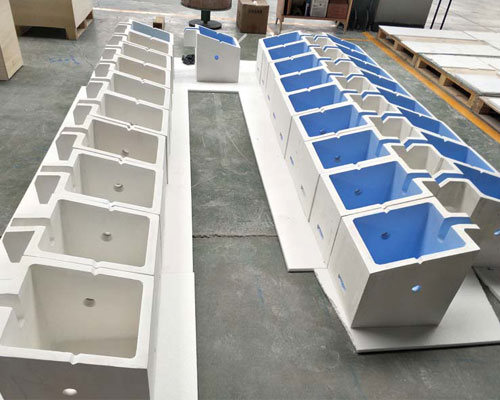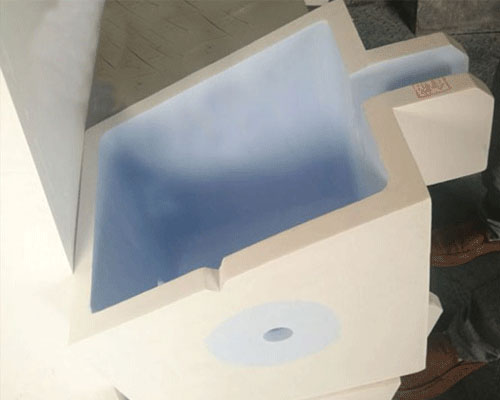The front box is actually a tundish. It consists of two connected containers. The outer shell is welded by steel plates and the inner lining, it is made of refractory materials such as aluminum silicate clay or asbestos wool. During the casting-rolling process, the liquid is stored and a certain level of liquid level is maintained to continuously supply aluminum melt to the casting-rolling zone. Its basic function is to control the pressure of the aluminum melt flowing from the feed nozzle into the roll gap of the casting roll, that is to say, the melt in the flow control box must maintain a relatively stable height. According to different metal types, strip thickness, pouring temperature and casting speed, the liquid level of the tundish should be controlled at different heights.
At present, the tundish liquid level control mostly adopts two-level control, that is, the aluminum liquid level is controlled by the orifice liquid level control device and the tundish liquid level control device, thus effectively ensuring the control accuracy of the front box liquid level (±1m). A vertically guided buoy is manually adjusted to a precise position. The height position of the buoy is detected in the form of pulses, and the detection results are sent to the orifice level control system. The movement of the drill to control the orifice can be completed by an electric actuator to achieve the control purposes of the orifice level. The front box is equipped with a front box liquid level control device and a liquid level alarm device. It can realize automatic liquid level control of the front box, automatic display of actual liquid level and over-liquid level alarm.

When the liquid level of the tundish is in a balanced state, the hydrostatic pressure of the liquid column in the front box is equivalent to the additional pressure of the oxide film on the aluminum liquid. The height of the front box and the oxide film radius between the nozzle rolls are optimally matched, and the casting and rolling process maintains a dynamic Balance, casting and rolling can continue.
When the liquid level of the tundish is low, the radius of the oxide film between the nozzle rollers will increase, the oxide film will be elongated, and the oxide film itself will be less stressed and not easily damaged. At this time, the surface quality of the board is better. However, the aluminum liquid level is low to a certain extent, and the plate surface is prone to void defects due to insufficient metal supply.
When the liquid level of the tundish is high, the static pressure head of the melt is high, that is, the greater the static pressure, the smaller the radius of the melt oxide film and the thinner oxide film, when the radius of the melt oxide film is less than a certain value, the oxide film is Damaged, the surface of the board is oxidized and folded in the lighter ones, and the casting-rolling is interrupted in severe cases.

